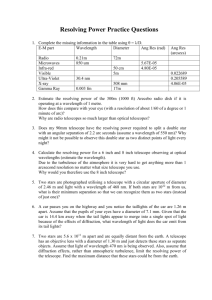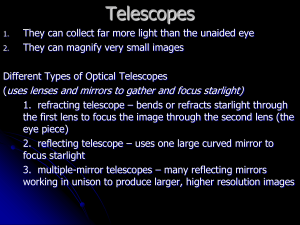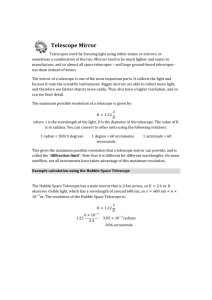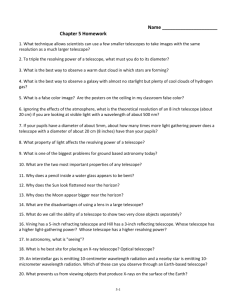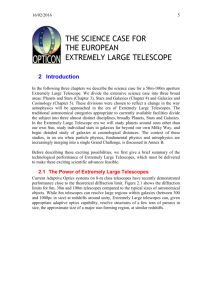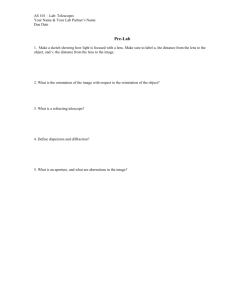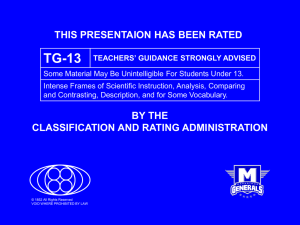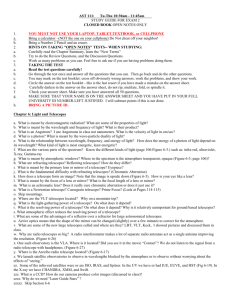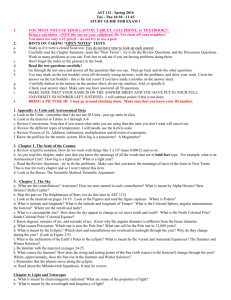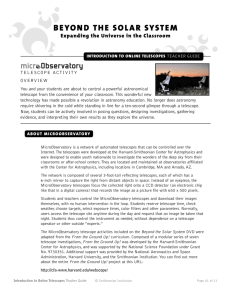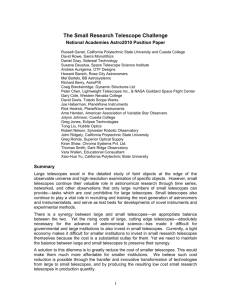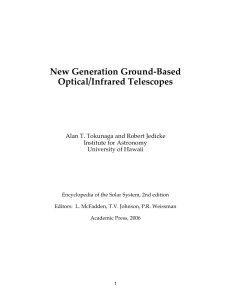Radio Telescopes - Beverley High School
advertisement
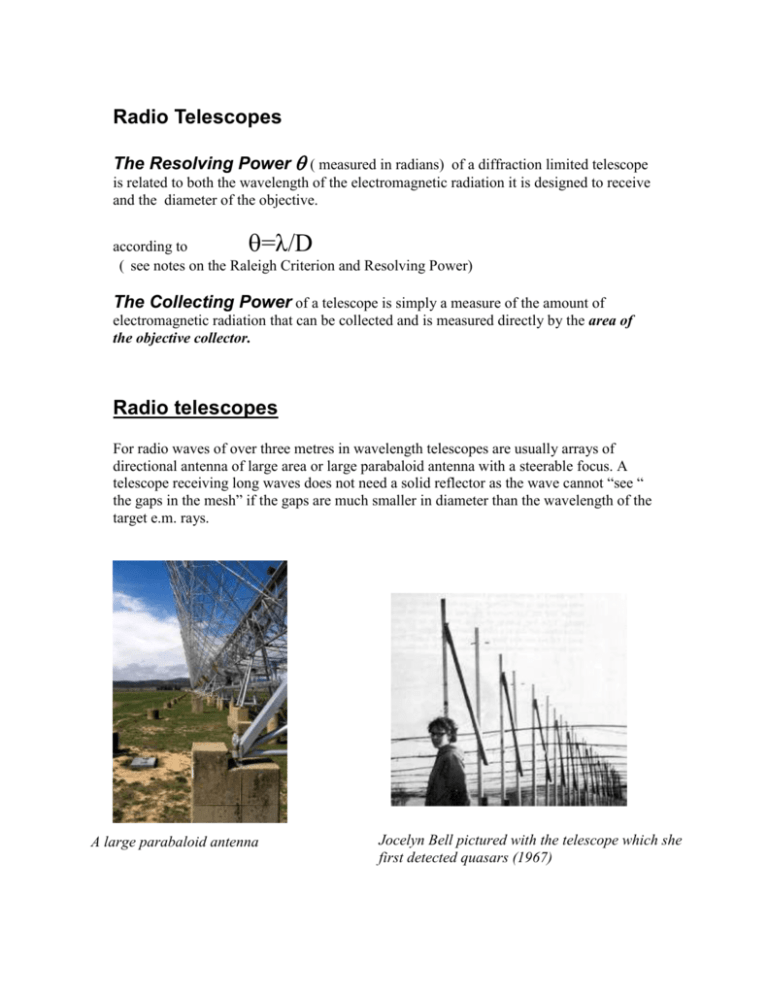
Radio Telescopes The Resolving Power ( measured in radians) of a diffraction limited telescope is related to both the wavelength of the electromagnetic radiation it is designed to receive and the diameter of the objective. =λ/D according to ( see notes on the Raleigh Criterion and Resolving Power) The Collecting Power of a telescope is simply a measure of the amount of electromagnetic radiation that can be collected and is measured directly by the area of the objective collector. Radio telescopes For radio waves of over three metres in wavelength telescopes are usually arrays of directional antenna of large area or large parabaloid antenna with a steerable focus. A telescope receiving long waves does not need a solid reflector as the wave cannot “see “ the gaps in the mesh” if the gaps are much smaller in diameter than the wavelength of the target e.m. rays. A large parabaloid antenna Jocelyn Bell pictured with the telescope which she first detected quasars (1967) Using smaller telescopes produces very low resolution. The resolving power of a 100m diameter dish telescope detecting 3m waves is D 3 0.03radians 100 or more than 1.5o which is equivalent to more than 3 moon diameters. This means that a source could not be located more accurately than that in the sky with such a telescope. The largest fixed dish radio telescope in the world is at Arecibo in New Mexico and is 300m in diameter: The telescope has a moveable focal point suspended above the dish.. This allows it to point at a single source for longer as well as allowing for the viewing of targets not directly overhead. This telescope is designed to receive 6m to 3cm wavelengths. Calculate the resolving power of the telescope at these wavelengths. For shorter radio waves moveable dish telescopes are favoured. Telescopes working at wavelengths above 30 cm (1 GHz) range in size from 3 to 90 meters in diameter. The largest steerable dish in the world is the 100m dish in Effelsburg in Germany. The Jodrell bank telescope in Cheshire is 76 m in diameter. The Jodrell Bank telescope works with e.m. radiation between 8m down to 67cm in wavelength.. A typical size of the single antenna of a radio telescope is 25 meters. Radio telescopes are often arranged in arrays for interferometry. The purpose is to achieve high-resolution observations using a low cost cluster of comparatively small telescopes rather than a single very expensive large telescope. An array of telescopes can use interference to produce greater resolutions.

